Kiddom: Standards-Based Grading Made Wonderful
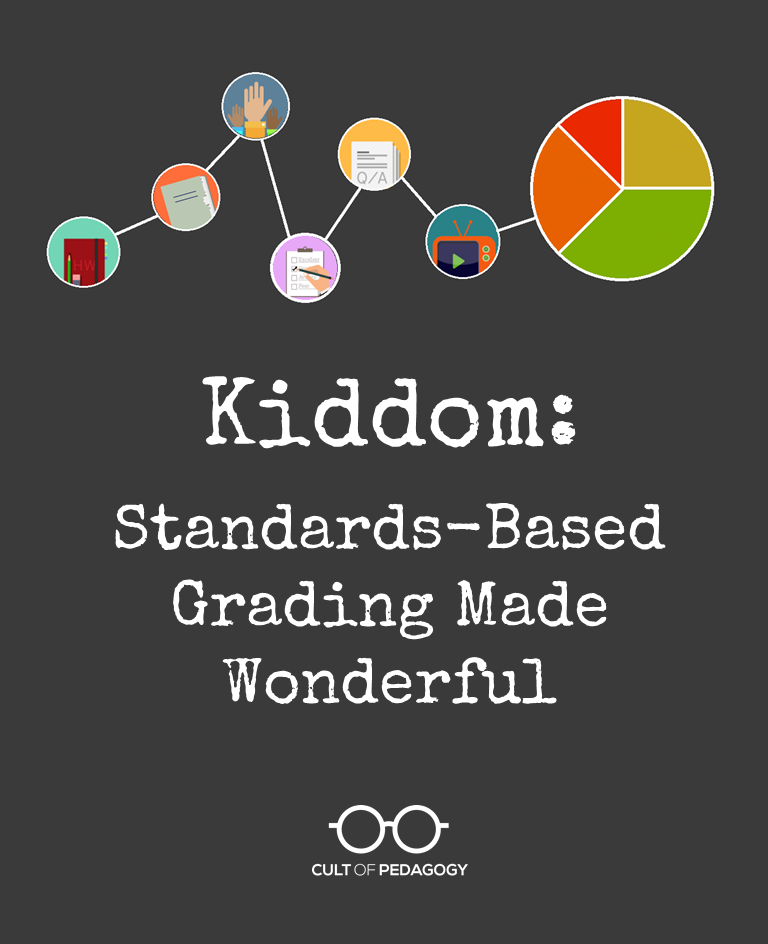
This is a sponsored post. All opinions are my own.
The growing popularity of standards-based grading and instruction is a good thing: Instead of a single grade representing how much work our students did, standards-based assessment gives us a detailed picture of what they learned.
The only problem is, doing standards-based grading right can be incredibly time-consuming. If you’re trying to help a lot of students master a lot of standards, monitoring which students need help on which standards can quickly overwhelm you. Ideally, you’d have a program that keeps track of every standard measured by every assignment, then crunches the numbers over time so you can adjust your instruction accordingly.
That’s where Kiddom comes in.
Kiddom is a free platform that allows you to track student assignments along with the standards they assess for, then access a range of data reports that tell you which standards need more work, which students need more help, and where exactly you need to put your energy.
How it Works
As the teacher, I start by setting up an assignment. Kiddom gives me lots of options to choose from, including exit tickets, homework assignments, papers, tests, and projects. The assignment can be a lesson I already use in my classroom, or I can choose something from Kiddom’s large library of interactive, standards-aligned lessons from sources like Khan Academy, CK-12, and IXL. That means less time preparing materials and a greater ability to differentiate instruction.
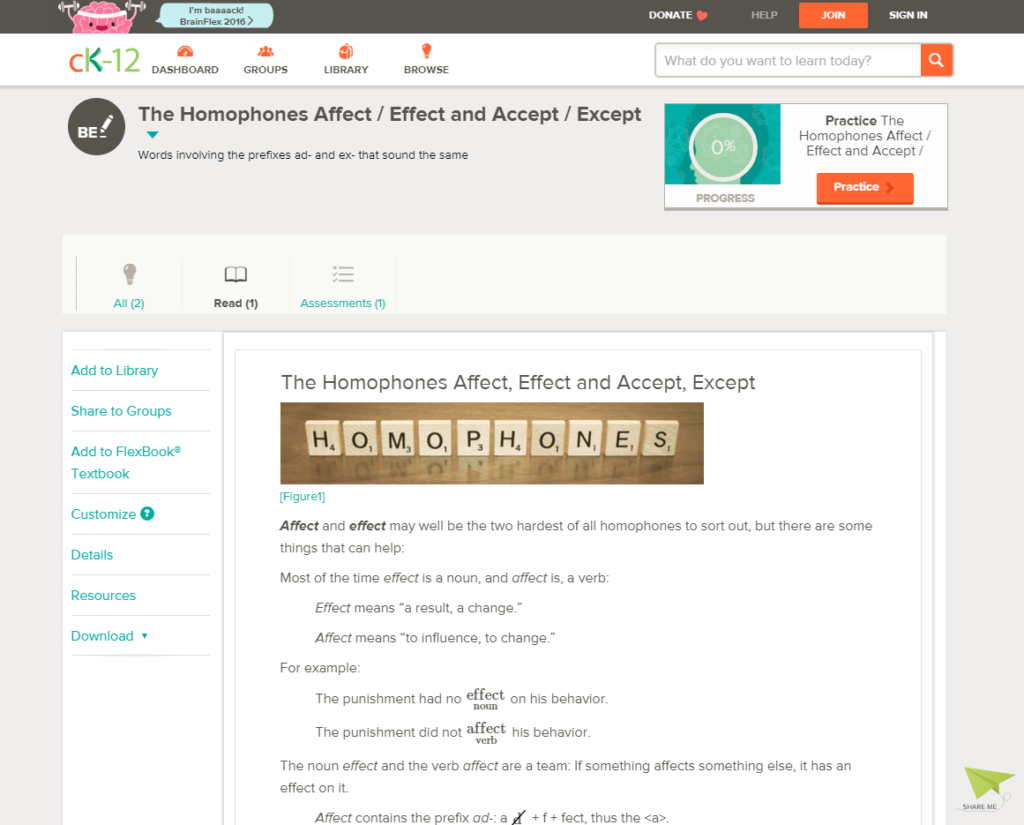
This lesson on homophones is just one of many available in Kiddom’s free content library.
Next, I choose the standards I want to align with the assignment. I can grade the assignment with points or a rubric. If I choose a rubric, I can create as many assessment categories as I’d like—to grade for different criteria—and define the qualities of each level of performance. Then I can align that category with a specific standard. Once I have created a rubric category, Kiddom saves it so I can re-use it for other assignments.
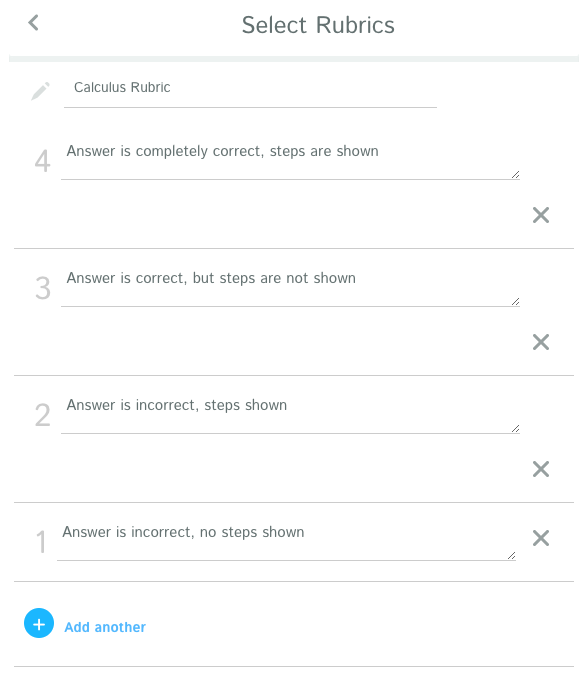
I can save my custom rubrics for later use with other assignments.
Students submit their assignments—either on paper or through Google Drive (more on this below)—and I enter their grades. If I want, I can send comments to students right inside Kiddom, and they can reply back to me:
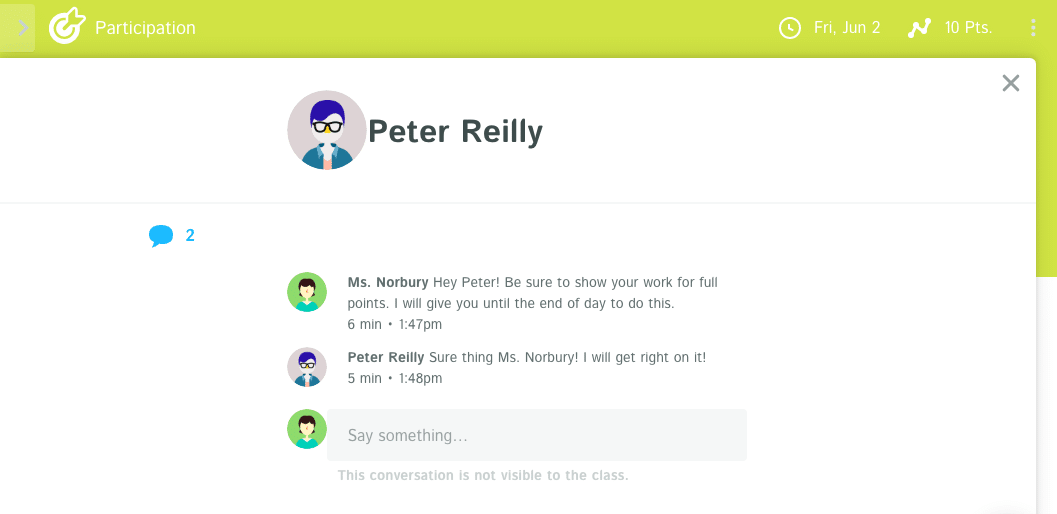
When grades have been entered, I can look at a Class Mastery overview that summarizes student progress on all standards. This overview includes all assignments that have been done up to that point:
Click to view larger image.
Every time a new assignment is graded, this page will change, giving me a real-time look at exactly where my class is as a whole, where each student is in terms of overall mastery, and to what extent each standard is being mastered, which is shown in the bottom half of the above chart. If I click on any of those standards, a pop-up window will appear that shows me exactly where each student is in terms of mastering that standard, allowing me to group students according to their need for remediation or enrichment:
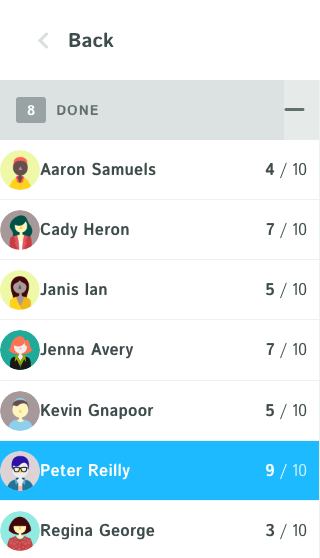
Plenty of Standards to Choose From
Kiddom allows teachers to select from a long list of standards with which to align student work. This includes, but is not limited to, the Common Core State Standards, Next Generation Science Standards, and a growing list of standards specific to over 15 states, including Texas, New York, California, and Arizona. These are all fully integrated into the system, so choosing the right one for each assignment is as simple as clicking a button. For a full list of available standards, click here.
And the standards go beyond academics: Also integrated are CASEL’s Social and Emotional Learning Core Competencies, so teachers can track these skills as part of a student’s overall growth profile.
On top of all this, teachers can also create or upload their own custom standards, which is ideal for meeting school-specific initiatives or aligning goals with IEPs.
Easy Reporting
Not only does Kiddom make it easier to view student data in all kinds of configurations, there’s also the option to produce a PDF report card for each student that summarizes all their work for a grading period. With a single click, these can be created to summarize student progress based on standards (left) or assignments (right). These reports can be shared with students, their parents, and support staff.
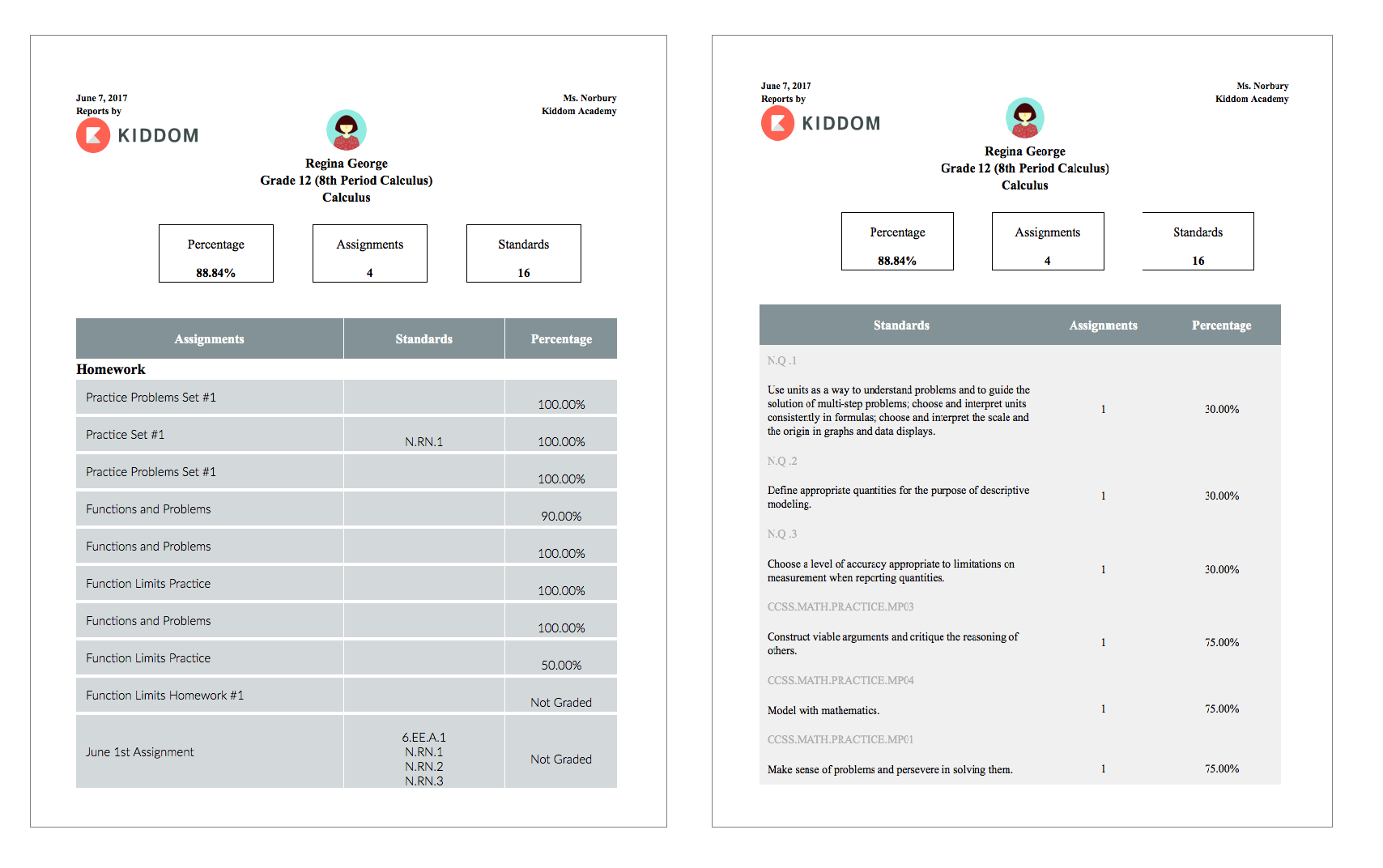
Click to view larger image.
Google Drive Integration
If you and your students are working in Google Drive, you are going to love this feature: When you create an assignment, you can link it to a file in your Google Drive. This might look like an essay prompt, a science lab report form, or an open-response question. Once the file has been linked, Kiddom automatically creates a brand-new copy of that file for each student, puts it into that student’s Drive, and gives you access to that file in a folder on your Drive. That way, you can easily go into each student file to grade it AND make changes to certain students’ assignments for differentiation purposes.
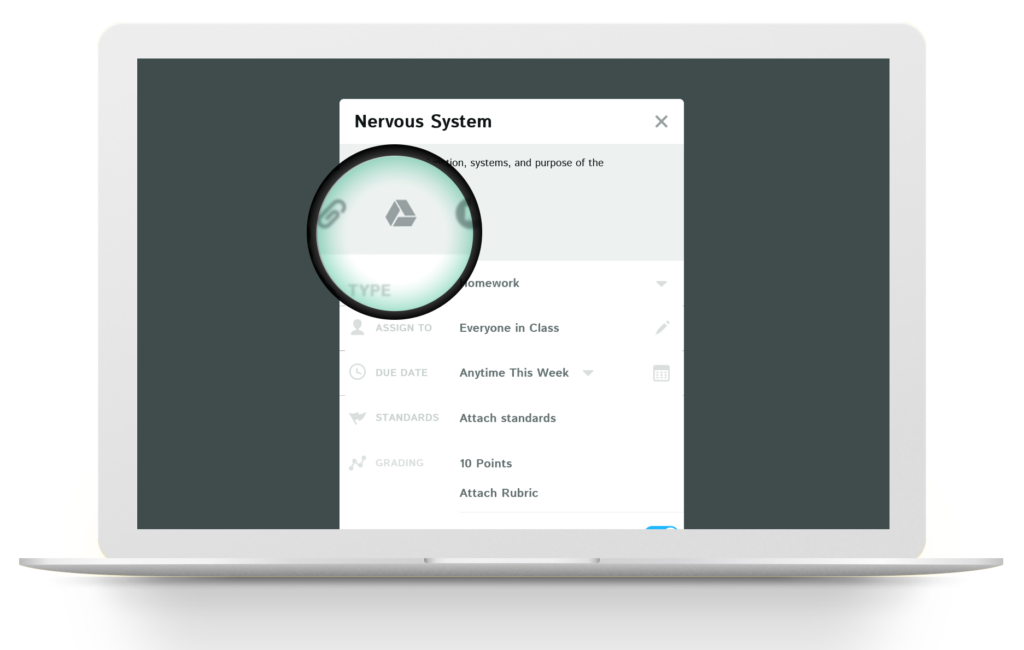
Standards-Based Grading from Your Phone
Kiddom also offers a free iOS app that allows you to perform about 90 percent of the platform’s web-based functions, so you can get your planning and grading done on the go.
Coming Soon: Gradebook Integration
The Kiddom team—many of whom are former or future educators—is hard at work making Kiddom an even more robust platform for supporting data-informed instruction. At the moment, teachers who use Kiddom still have to manually enter grades into their school’s grading program separately, but Kiddom is developing integrations with popular grading programs Edmodo, Schoology, Engrade, and PowerSchool, which will ultimately allow teachers to enter a grade once and have it populate in both Kiddom and their grading software.
So if you’re fully on board with the philosophy behind standards-based grading, but managing all that data has given you second thoughts, things are about to get a whole lot better for you. Kiddom’s free tools will take what was once a pile of numbers and turn it into the kind of focused, impactful work standards-based instruction is supposed to be…some might even say wonderful. ♦
Update September 13, 2016: Kiddom is growing! They have now published a free Guide to Standards Based Grading and a free Guide to Social Emotional Learning. Check them out!
Other Updates: Kiddom 2.0 provides educators with a centralized platform to access a variety of dimensions about student performance. 50+ features have been added to the new Kiddom 2.0. Highlights include:
- New Planner: ability to design personalized curriculum, to stay in sync with student needs.
- Better Reports: beautiful analytics to understand student performance.
- More Customization: teachers can customize content, grading and analytics according to their classrooms
- Beautiful Design: a major redesign focused on functionality and usability, developed with educator feedback.
- Teacher Collaboration: teachers can now collaborate right on the Kiddom platform. Learn more here.
Join my mailing list and get weekly tips, tools, and inspiration—in quick, bite-sized packages—all geared toward making your teaching more effective and fun. You’ll also get access to my members-only library of free downloadable resources, including my e-booklet, 20 Ways to Cut Your Grading Time in Half, which has helped thousands of teachers spend less time grading!
